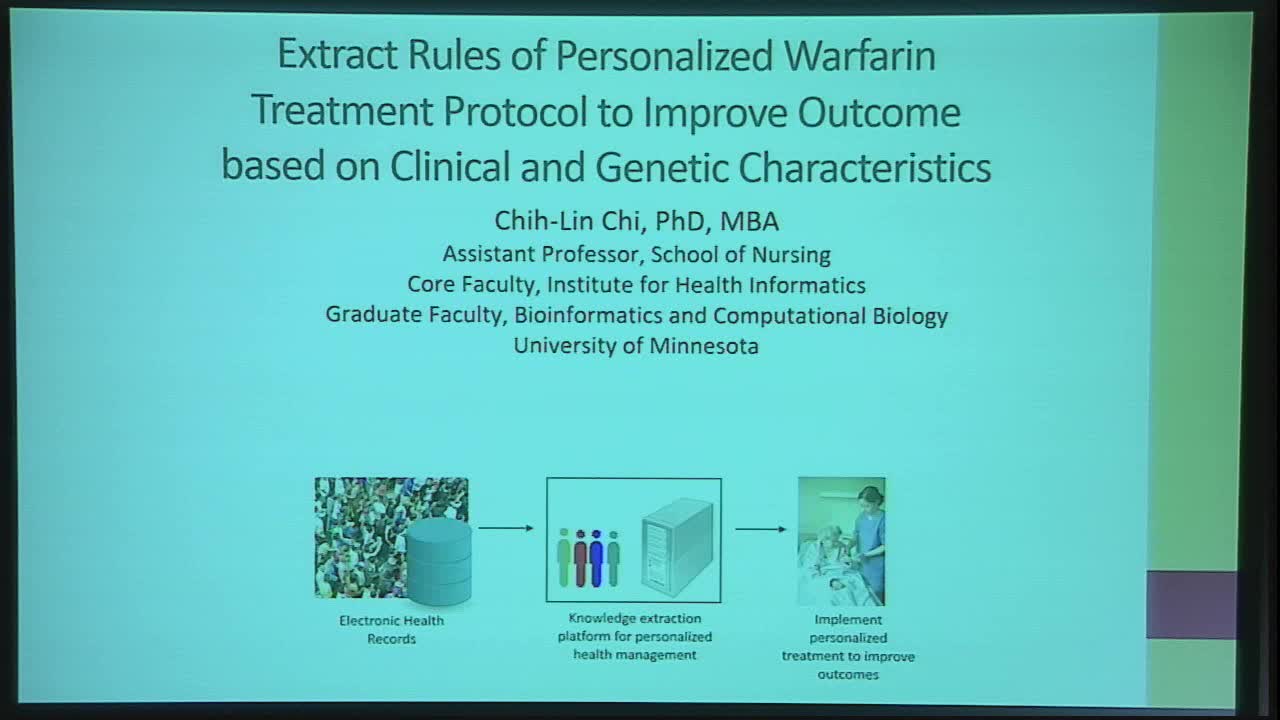Optimal Decision Support Rules Improve Personalize Warfarin Treatment Outcomes
Presenter
September 16, 2017
Abstract
We tested optimization-based approaches to generate decision support rules used to improve personalized warfarin treatment based on clinical and genetic characteristics. Our approach simulated warfarin treatment outcomes using five existing treatment plans for clinical avatars (virtual patients). We used individual clinical avatar Time-in-Therapeutic-Range to represent the two-sided adverse risk to bleeding (over dosed – above therapeutic range) and thrombosis (under dosed – below therapeutic range) and as the objective function in the optimization to minimize overall risk.
A series of optimization approaches demonstrate that correctly selected decision rules matched to particularly characterized patients produce treatment plans that minimize risk. Finally, a decision tree algorithm was used to produce decision rules, each of which indicated a specific treatment plan that optimally reduces risks for a patient subgroup. The optimization approach minimizes entropy/impurity property thus producing rules that identify treatment plans that minimize overall adverse risks for the largest possible patient subgroups.
